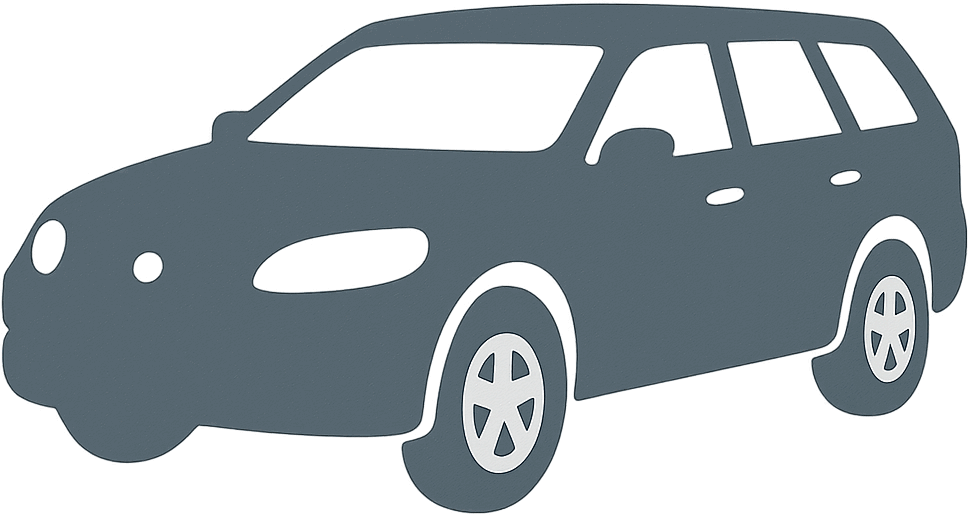 1976 Moskvich 2136 Combi Dimensions, Size & Specs
1976 Moskvich 2136 Combi Dimensions, Size & Specs
Measurements of the 1976 Moskvich 2136 Combi, engineered for optimal performance and comfort
| Dimensions | |
|---|---|
| Length: | 4210 mm165.7 in13.8 ft |
| Width: | 1550 mm61.0 in5.1 ft |
| Height: | 1270 mm50.0 in4.2 ft |
| Weight Specifications | |
| Curb Weight: | 1120 kg2469 lbs |
| Tire Specifications | |
| Tire Size: |
|
The Moskvich 2136 Kombi, also known as the 2136 Combi, was a popular station wagon produced by the Soviet automaker Moskvich from 1976 until 1987. This vehicle gained recognition for its practical design and compact size, serving as a versatile family or utility car during a significant period of automotive history in the USSR. Measuring 4210 mm (165.7 inches) in length, 1550 mm (61.0 inches) in width, and standing at 1270 mm (50.0 inches) tall, the 2136 Kombi features a relatively compact footprint that made it suitable for urban environments and narrow streets prevalent in many Soviet cities. Its curb weight stands at 1120 kg (approximately 2469 lbs), reflecting a mid-range weight for station wagons of its era, balancing durability with fuel economy. The vehicle rides on tires sized 165/80 R13, supporting its modest dimensions and contributing to its comfortable ride quality and handling. The Moskvich 2136 Kombi was appreciated for its practical hatchback design, offering ample cargo space and passenger comfort despite its smaller exterior size. Throughout its production run from 1976 to 1987, it remained a reliable and affordable choice for consumers seeking a functional station wagon. While simple by modern standards, the vehicle's dimensions and weight illustrate a design optimized for everyday use within the constraints of Soviet automotive manufacturing. Overall, the Moskvich 2136 Kombi remains a noteworthy example of Soviet station wagons from the late 20th century, characterized by its compact dimensions, lightweight construction, and utilitarian nature.
Discover the standout features that make the 1976 Moskvich 2136 Combi a leader in its class
Have a question? Please check our knowledgebase first.
The Moskvich 2136 Kombi station wagon measures 4210 mm (approximately 165.7 inches) in length, 1550 mm (about 61.0 inches) in width, and stands 1270 mm (about 50.0 inches) tall. These compact dimensions contributed to the car’s practicality and ease of maneuvering typical for mid-sized Soviet family vehicles of its era.
The Moskvich 2136 Kombi has a curb weight of 1120 kg (approximately 2469 lbs). This relatively moderate weight allowed for a balance between fuel efficiency and stability on the road. The vehicle's weight contributed to its steady handling under various driving conditions typical of Soviet roads but might have limited acceleration and agility compared to lighter or more modern cars.
The Moskvich 2136 Kombi is equipped with 165/80 R13 tires. These tires fit a 13-inch rim and have a reasonably high sidewall (80% of the tire width), which helps absorb road irregularities and provides a comfortable ride on uneven surfaces. This tire dimension was typical for vehicles of this segment and period, balancing durability and comfort.
Considering the length of 4210 mm (165.7 inches), width of 1550 mm (61.0 inches), and height of 1270 mm (50.0 inches), the Moskvich 2136 Kombi comfortably fits within most standard residential garages. Standard single garage widths typically range from 2400 mm to 3000 mm (approx. 94.5 to 118 inches) and lengths from 4800 mm to 6000 mm (approx. 189 to 236 inches), so this car’s compact size ensures easy parking and maneuverability inside such spaces.
Compared to its predecessor, the Moskvich 408 Kombi, the 2136 Kombi retained similar compact exterior dimensions but featured subtle updates. The length and width were roughly maintained to preserve maneuverability and practicality, while improvements in design and interior space utilization offered enhanced comfort without significantly increasing the car's footprint. The 2136's streamlined shape and slight weight optimizations also helped modernize this generation compared to earlier models.
During the late 1970s and 1980s, the Moskvich 2136 Kombi was fairly typical in size for a Soviet compact station wagon. Compared to Western models like the Volkswagen Passat Variant or Opel Kadett Caravan, the 2136 was somewhat smaller in width and height, making it easier to drive on narrow city streets common in the USSR. Though shorter and narrower, its hatchback layout provided practical cargo space, keeping it competitive in its class.
The Moskvich 2136 Kombi accommodated five passengers with a typical two-row seating layout. While exact interior dimensions are less commonly documented, the car's compact exterior dimensions implied a relatively tight interior, typical of Soviet vehicles of its time. The station wagon rear offered increased cargo volume, which allowed for flexible space use with foldable rear seats, making it a practical family car despite its modest size.
The Moskvich 2136 Kombi was a station wagon (estate) body style characterized by a two-box design with an extended rear cargo area accessible via a rear hatch or tailgate. This design provided versatility, blending passenger seating with utility. The relatively low height of 1270 mm (50 inches) maintained a sleek profile, while the wagon format allowed for better cargo capacity compared to standard sedans.
The Moskvich 2136 Kombi's compact size (4210 mm long and 1550 mm wide) contributed positively to fuel efficiency by lowering weight and reducing frontal area, minimizing aerodynamic drag. Its moderate curb weight of 1120 kg further supported economical fuel use typical of vehicles from the Soviet era. Additionally, the car’s modest dimensions made it well-suited for city driving and parking in tight spaces, a significant advantage in urban environments where space was often limited.
Despite its relatively compact exterior dimensions, the Moskvich 2136 Kombi offered a practical and flexible cargo area, which was competitive for its class during production years from 1976 to 1987. The extended roofline and estate body style created more usable volume behind the rear seats. Folding rear seats further enhanced cargo space, making the vehicle suitable for carrying bulky items or luggage, ultimately balancing a compact footprint with notable utility.
Discover similar sized cars.

| Production: | 1976-1987 |
|---|---|
| Model Year: | 1976 |
| Length: | 4210 mm165.7 in |
| Width: | 1550 mm61.0 in |
| Height: | 1270 mm50.0 in |
